Will Gompertz reviews Stan & Ollie ★★★★☆
- Published
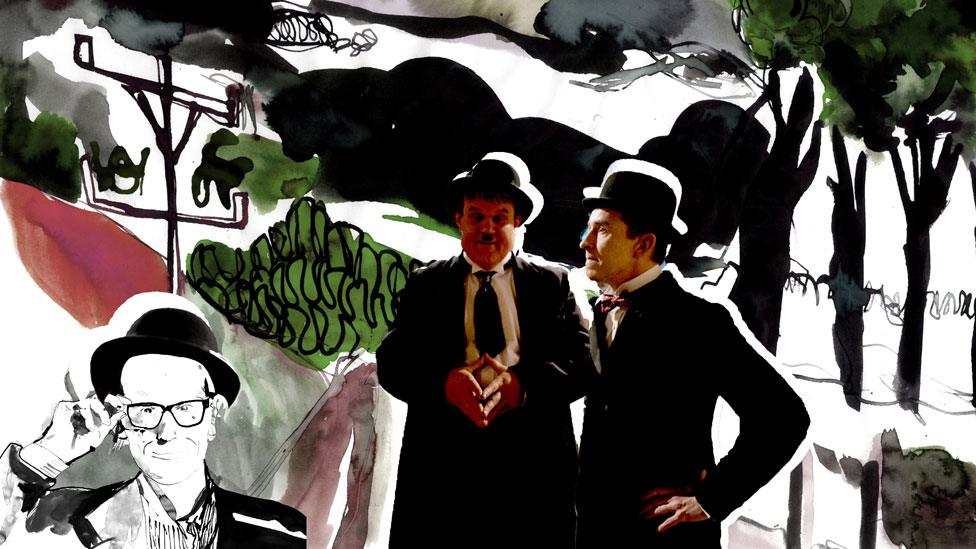
I've interviewed Steve Coogan a couple of times. Once as himself, and on another occasion with him in character as Alan Partridge.
Coogan called me a couple of days before the Partridge interview to talk through logistics.
He asked how I intended to approach the interview. Light-heartedly, I said.
Coogan advised otherwise, and suggested I play it completely straight. On the basis that, the more seriously I appeared to take the interview, the funnier he could be. My role in the makeshift comedy double-act was to play, as they say in showbiz, second banana.
He was right. It worked a treat.
Alan Partridge talks to Radio 4's Today about his travel memoir and state-of-the-nation polemic
As does his portrayal of the legendary comedian Stan Laurel in the biopic Stan & Ollie.
He makes no attempt to play the role for laughs - although routines are lovingly reprised or referenced - instead presenting us with an anxious and earnest ageing performer trying vainly to engineer a return to the glory days for him and his comedy partner.
That's where we first meet them, at their peak in 1937, preparing to shoot a tightly choreographed dance routine for their latest movie, Way Out West.
Stan is moaning to Ollie (played superbly by John C Reilly) about how little they are paid in comparison to other screen comedians such as Charlie Chaplin, for whom Laurel once understudied back in England's old music halls.
Now, he and Ollie are two of Hollywood's biggest stars, but without the pay packet to match.
Stan wants to end their contract at the Hal Roach Studio, but the more laidback Ollie - or Babe, as friends knew Hardy - isn't so sure.
After all, Roach was to them as Simon Cowell is to One Direction: he was the man who put them together and in doing so created what is possibly the greatest on-screen comedy double-act of all time.

L-R: Steve Coogan as Stan Laurel, John C. Reilly as Oliver Hardy, Danny Huston as Hal Roach
Ollie stays, Stan leaves the studio, and, within a few years, so does the magic, even after they are reunited.
By 1953 they find themselves washed-up in England, standing outside a dreary-looking pub in the pouring rain where they have two very basic rooms booked at the start of their largely unheralded tour of the UK.
Ollie is sanguine, while Stan is in denial and refusing to accept a final chapter that would see the Oscar-winning comedians end their career in near empty provincial theatres.
What follows is a gentle, nostalgic exploration of their relationship - a bromance of sorts, with all the little tiffs and harboured grudges that are part-and-parcel of any love story.
Ollie wants to relax, play golf, and have a bet on the horses. Stan is a workaholic, constantly writing new material, pitching movie ideas, and coming up with publicity stunts.
They are the very definition of the archetypal odd-couple off screen just as thy are on it, where Laurel is a skinny, timid Englishman and Hardy an overweight bossy American.
Coogan and Reilly play them as two lovable but languishing old boys in this warm-hearted tribute to a couple of greats from a bygone age.
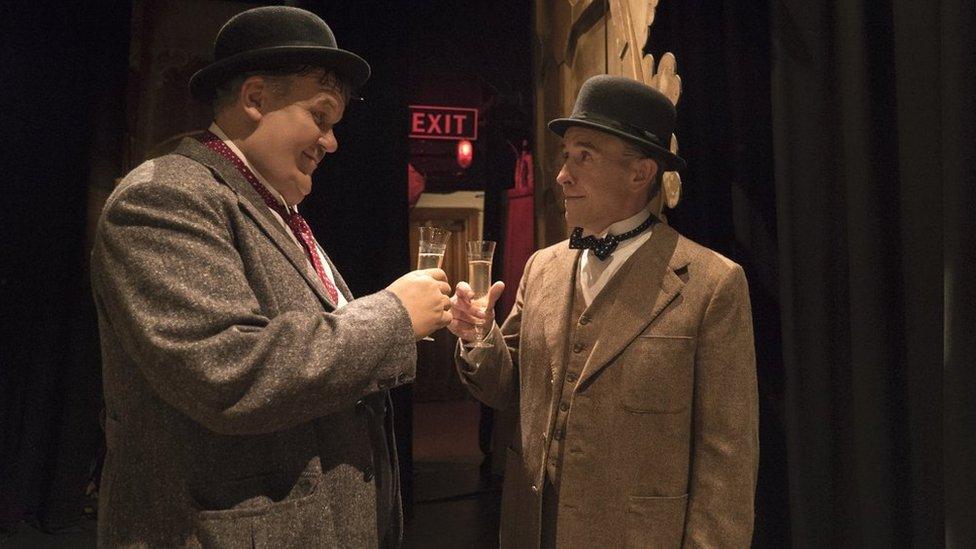
And that is very nice for those of us over the age of, say, 45 years old, for whom the film is a pleasant trip down memory lane to our childhood when Laurel & Hardy re-runs were a TV staple.
But for those not brought up on a weekly diet of their tit-for-tat slapstick and quotable catchphrases - "that's another nice mess you've got me into" etc - it's not so obvious what the incentive would be to go to see the film.
Unless you'd spent an hour or so on the internet, where classic Laurel & Hardy movies are readily available to watch.
There are loads from which to choose - they were prolific - but perhaps best to start with their Oscar-winning short The Music Box (1932).
The much-copied but never bettered film is a masterpiece of exquisite timing, first-class physical comedy, and brilliant writing. Here's the set up:
Laurel & Hardy are removal men with a piano to deliver, which is loaded on the back of their horse-drawn cart. They stop and ask a postman the whereabouts of the house to which they are delivering, 1127 Walnut Avenue.
The postman turns and points: "That's the house up there, right on top of the stoop."
Cut to a shot of the steepest, longest flight of stone steps you can imagine.
And then back to Hardy, who turns to Laurel and repeats the postman's words - "That's the house up there, right on top of the stoop" - before they both turn and look at the crated-up piano.
What ensues is 25 minutes of near-perfect farcical comedy. The mayhem works for many reasons, not least because they were both already experienced seasoned comic actors long before Roach put them together.
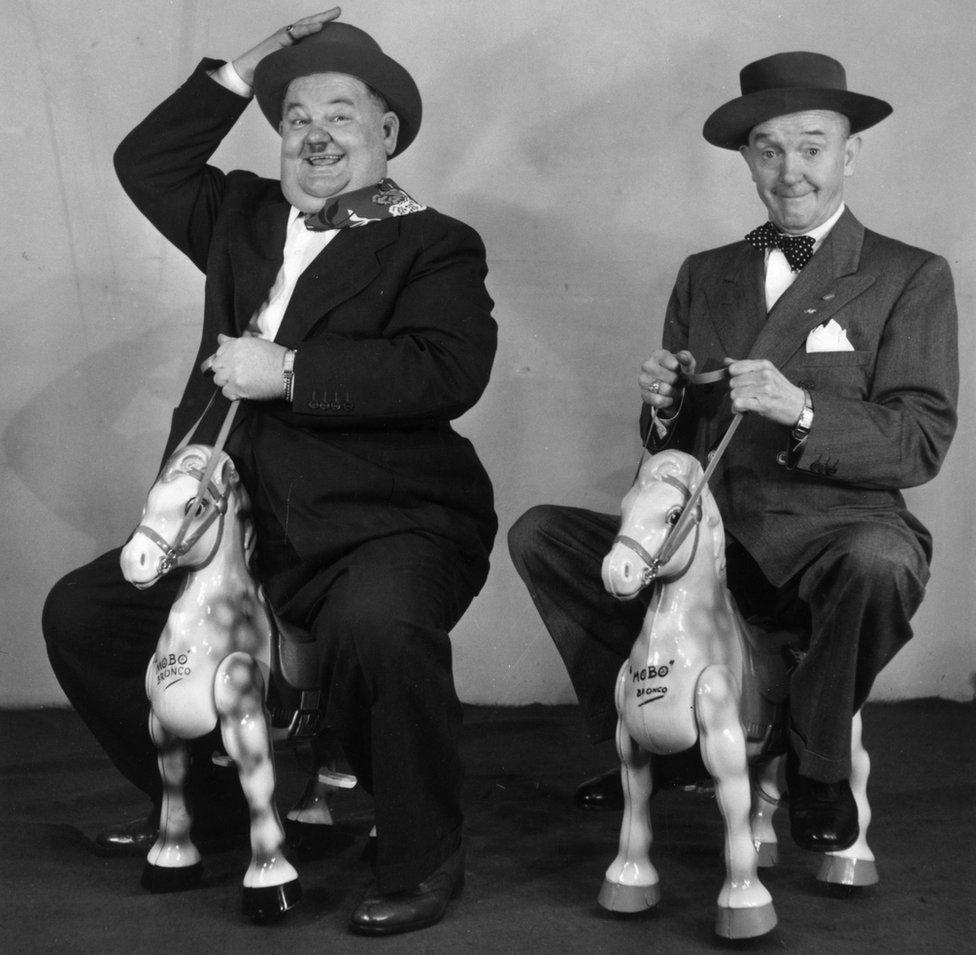
Oliver Hardy (left) and Stan Laurel pictured in 1947
But it was Roach who saw the potential of them as a double act consisting of two funny men, and not the more typical combination of a funny guy and a straight man (second banana). They may not have liked the contract, but they, and we, owe Roach.
He accentuated their physical and emotional differences by dressing them in near identical outfits with individual modifications. Laurel wears slightly tighter fitting clothes, sports a bowtie and a bowler hat that's too small, all of which has the effect of making him look taller, thinner, and weedier.
That creates the dynamic with Hardy's persona as an overbearing playground bully who uses his weight to push his friend about while being the first to start oiling up to teachers.
Ultimately, they are both losers who are constantly struggling, which is why we love them - they are just like us.
And it is why this undemanding film written by Jeff Pope (Philomena - also with Coogan) is a pleasure from the first scene to the last.
It doesn't attempt to poison their legacy, but to celebrate and acknowledge it, while contemplating what it must have been like for this odd couple to come to terms with each other, their shared past, and uncertain future.
- Published11 January 2019
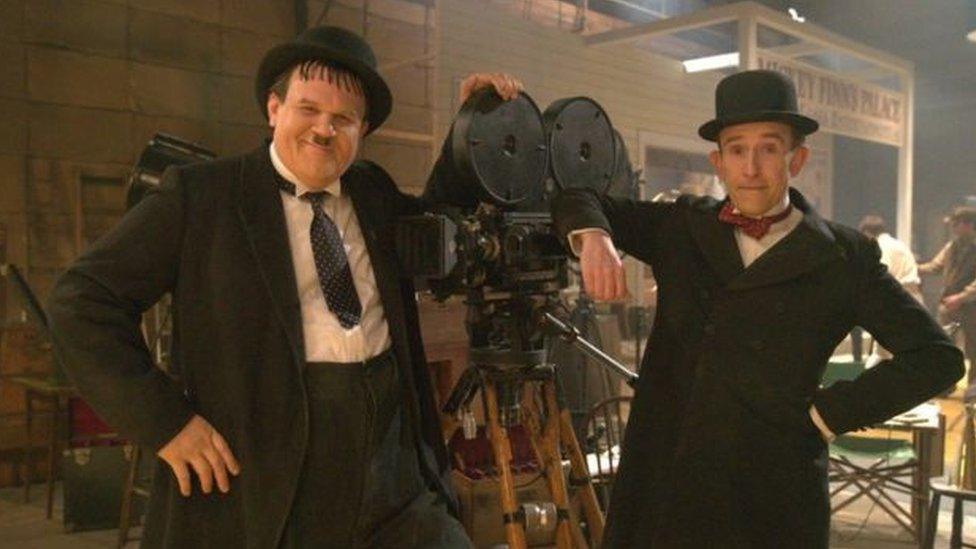
- Published11 January 2019
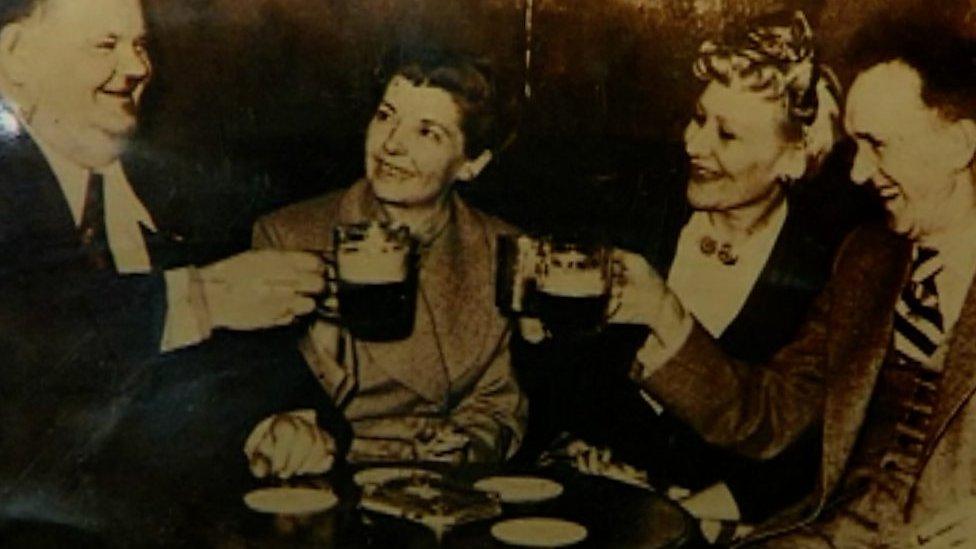
- Published7 January 2019
